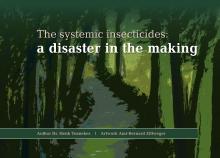More than 100 butterfly species extinct in Singapore
Butterflies in Singapore have decreased in both number and variety since the 1980s. Excluding new butterfly species, some 117 are now believed to be extinct; there have been no reliable observations of them for at least the past two decades. A comparison with past recorded checklists shows there are now 306 species, down from 386 in the 1950s to 1980s. Citing these figures, butterfly expert Khew Sin Khoon, who is also an honorary research affiliate at the Raffles Museum of Biodiversity Research, said the trend was mainly due to the loss of habitats. "Butterflies are tightly correlated with plants, and as Singapore developed, the habitats that they prefer may have been destroyed... Some of the caterpillar host plants may have (also) gone extinct," he said. It is not known when the sharpest decline in the number of butterfly species took place but Mr Khew said the peak of development occurred in the 1970s and 1980s when tracts of land were cleared to make way for new homes. Ecologist Anuj Jain, 29, said that over the years, developments around forests have resulted in what he calls "fragmented forests". "If the forest is big, you have a bigger interior but if you have smaller forests, it means there are more areas for light exposure," said Mr Anuj, who heads the Butterfly Interest Group at Nature Society of Singapore (NSS). "Although some species are adaptable to light conditions, most butterflies like to hide in darker areas."More recently, the increased fumigation in residential areas is also threatening butterflies and caterpillars, said Mr Khew.










